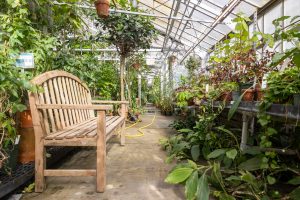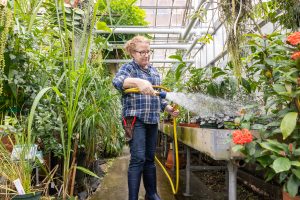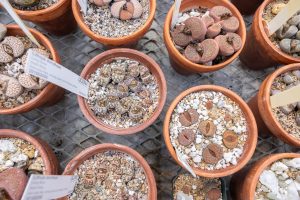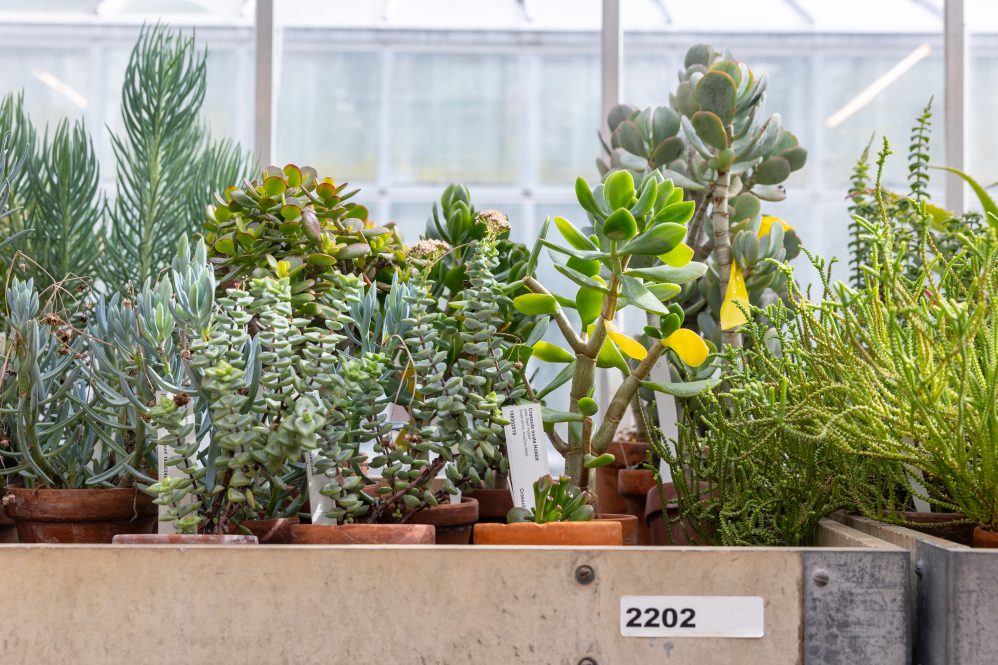On April 27th, the UConn Botanical Conservatory will be hosting a tour for the Garden Club of America. The GCA, which was founded over 100 years ago and has 18,000 members in chapters nationwide is holding its annual meeting in Hartford Connecticut this year, and an outing to the most biologically diverse collection of plants in the Northeast is a perfect fit for the club’s horticultural enthusiasts.
Professor Emeritus and Director of the UConn Botanical Conservatory Cynthia Jones says the visit from such a prestigious horticultural organization recognizes the immense educational and scientific value the of the plants in the conservatory.

“They are the most prominent national garden club in America and the fact that they asked for tours of the UConn Botanical Conservatory speaks to the reputation of our collection. It is a huge honor for us and is a point of pride for UConn,” says Jones.
The Garden Club of America’s purpose is to share horticultural knowledge and the interdependence between plants, the ecosystem, and environmental protection, and they do this through extensive community outreach, conferences, and public engagement. They also award scholarships, which have supported the research of several Ecology and Evolutionary Biology students I the past.
With an expected turnout of over 160 people, it will be the biggest tour the conservatory has ever led, says Botanical Collections Manager Meghan Moriarty.
For those who have not yet visited the greenhouses situated behind the Torrey Life Sciences Building, the Botanical Collections is a place like no other on campus. Not just home to the most diverse botanical collection in the Northeast, the collection is one of the most diverse at a public academic institution in the United States.
“We have over 2,700 species spread across 5,000 individual plants. This includes eight species that are extinct in the wild. Collections of living material like the Conservatory’s are critical to the survival of those species.”
Moriarty recalls a recent example of this critical role:

“One of the plants that we grow here that is extinct in the wild is the Rwandan water lily, Nymphaea thermarum. It was known to only grow near a specific hot spring, and the population was wiped out due to habitat loss. We were contacted recently by someone from the National Herbarium of Rwanda because they recently discovered another population of the Nymphaea in the wild. They were wondering if we still had the plant in the Living Plant Collection, I told them we did, and it is flowering right now. He was very excited because many of the other places that had Nymphaea were not able to grow it long term and get it to flower.”
Jones says this example speaks to the extraordinary talent and knowledge required to keep the collection’s plants alive, especially since, in the case of the Rwandan water lily, getting some of these plants to flower is tricky. Besides UConn, successfully flowering Rwandan water lilies are kept at the Kew Royal Botanical Gardens in the United Kingdom, and both collections could someday help reintroduce populations of this plant in the wild.
“It requires a great deal of expertise to care for a collection this diverse. I don’t think there’s any other academic institution in the country, except for maybe two that have collections this extensive. It is a unique resource that sets us apart from other institutions,” says Jones.
For the GCA tour, Moriarty is making plans to ensure docents will be available to share information and guide visitors through the greenhouses, which house plants from many different growing zones and regions across the globe.
“When you walk into the collection, you are totally immersed in different colors, smells, textures, and it’s always changing day by day,” says Jones.

Moriarty, who brings a wealth of expertise in research and commercial growing says working in the living collection is exciting,
“Every day is so refreshing walking through there and I think from the perspective of visitors to the greenhouse, they have a chance to see things that they will never see anywhere else.”
Moriarty also enjoys the experience of working within the conservatory community. Though the community is a small one, the conservatories all work together by propagating and sharing plants to collectively preserve as much as they can.
“If you have something particularly rare, you always want to make sure you try to propagate it and share it with other collections. You want to have a species of plant in as many places as possible, especially if it is difficult to grow or is rare,” says Moriarty. “We do a lot of trading with other institutions that have Living Plant Collections here in New England and also across the country and abroad. It’s important to network and talk to other people that are doing what we do.”
Moriarty and Jones are hopeful that the GCA visit will help expand their network, or at the very least, get the word out about this amazing collection tucked in the middle of the Storrs campus.
Jones says, “I hope people will learn about how much we do in this facility, and also that the residents of Connecticut will recognize the resource and amazing opportunity to see what we have here.”
Follow the Botanical Collections on Instagram, Facebook, and tumblr. If you are on or near campus, the greenhouse hours are 8:00am-4:00pm Monday-Friday and Saturday 10:00am-2:00pm (closed Sunday).



